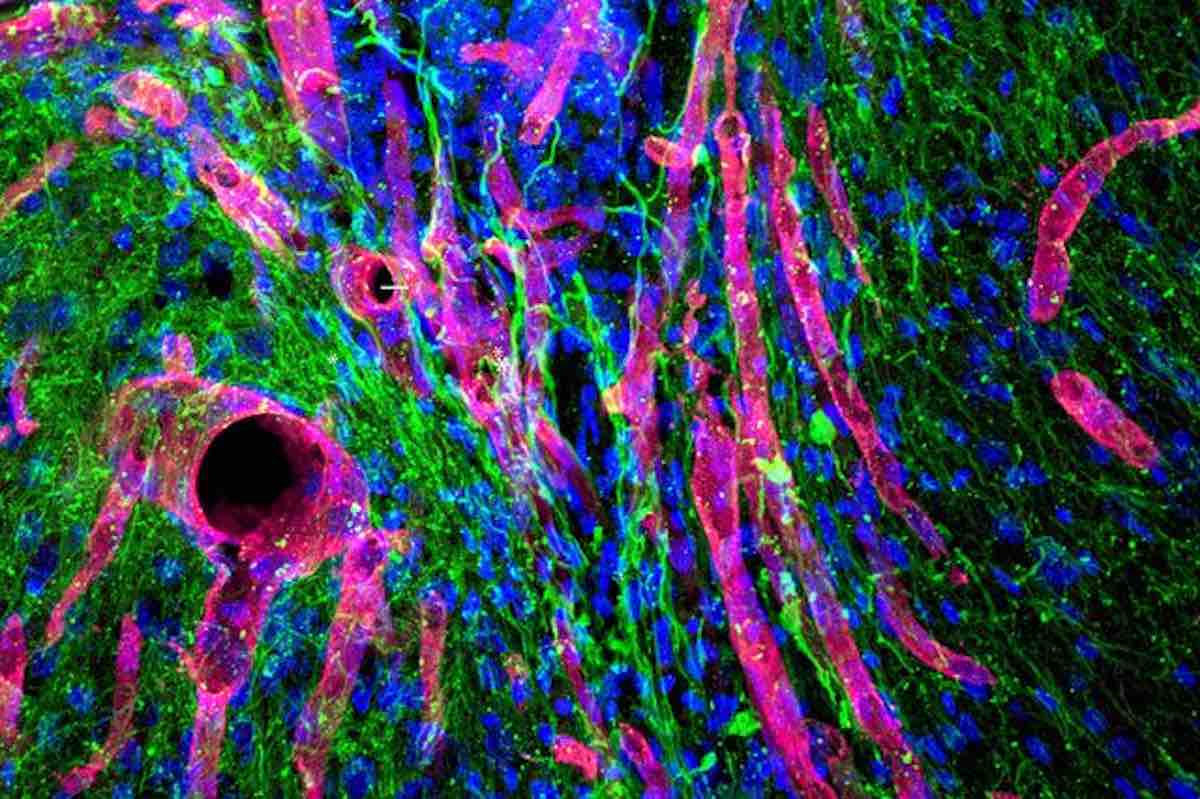Researchers have just made a breakthrough discovery in how we can possibly treat stroke patients in the future.
A team of scientists at the University of California Los Angeles successfully regrew brain tissue that was previously damaged by a stroke.
“We tested this in laboratory mice to determine if it would repair the brain and lead to recovery in a model of stroke,” said Dr. S. Thomas Carmichael, professor of neurology at the David Geffen School of Medicine at UCLA. “The study indicated that new brain tissue can be regenerated in what was previously just an inactive brain scar after stroke.”
The brain has a limited capacity for recovery after stroke. Unlike the liver, skin and some other organs, the brain does not regenerate new connections, blood vessels or tissue structures after it is damaged. Instead, dead brain tissue is absorbed, which leaves a cavity devoid of blood vessels, neurons or axons — the thin nerve fibers that project from neurons.
RELATED: This One Peptide Could Treat MS, Alzheimer’s, Crohn’s, and More
As a means of filling these stroke-induced cavities in the brains of mice, the researchers applied a gel-like biomaterial that formed a kind of scaffolding into which new neurons and blood vessels could grow.
The gel is also infused with medications that stimulate blood vessel growth and suppress inflammation, since inflammation results in scars and impedes functional tissue from regrowing.
After 16 weeks, the stroke cavities contained regenerated brain tissue, including new neuronal connections — a result that had not been seen before. The gel was eventually absorbed into the body, leaving only healthy tissue behind; and the mice’s ability to reach for food improved, a sign of improved motor behavior, although the exact mechanism for the improvement wasn’t clear.
MORE: Drinking Baking Soda Could Be Cheap, Safe Way to Combat Autoimmune Disease, Says Scientists
“The new axons could actually be working. Or the new tissue could be improving the performance of the surrounding, unharmed brain tissue,” said Tatiana Segura, a former professor of chemical and biomolecular engineering at UCLA who collaborated on the research.
Regardless, the gel is being hailed as a revolutionary discovery for future stroke treatment. The researchers now plan on studying the gel’s efficacy for regrowing brain tissue long after the stroke has occurred.
Share The Exciting Breakthrough With Your Friends – Photo by UCLA Health




















